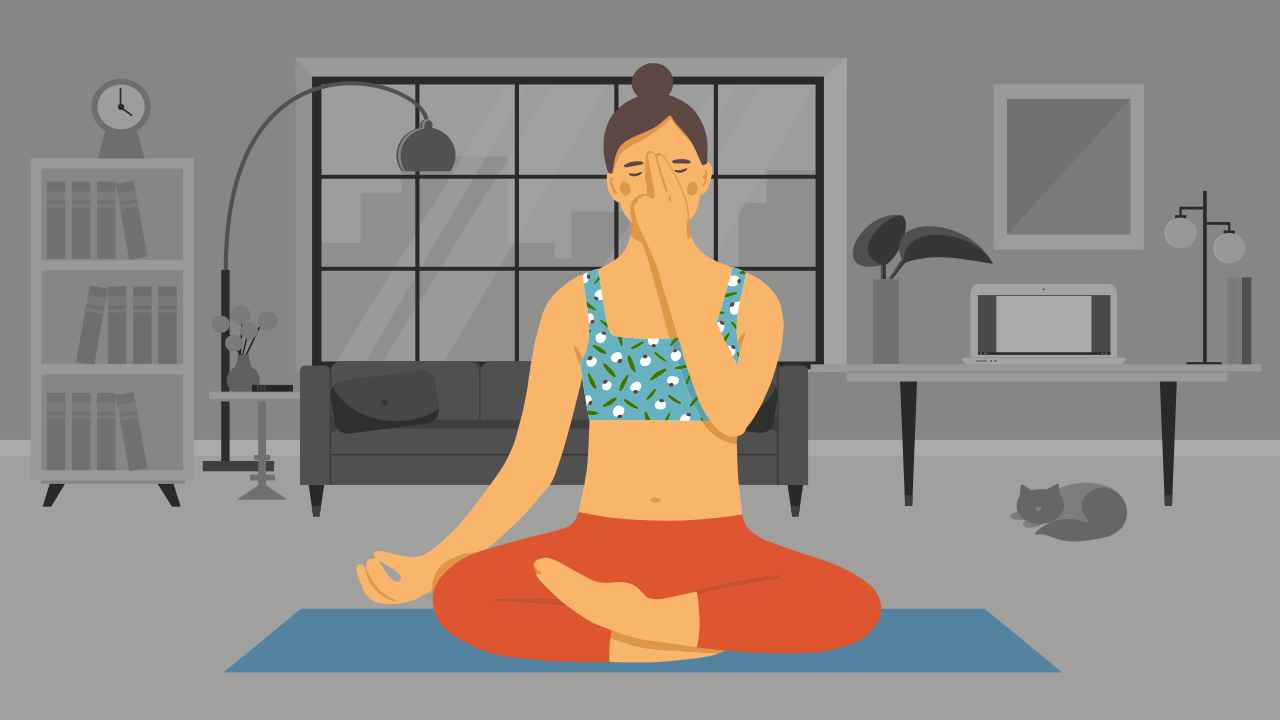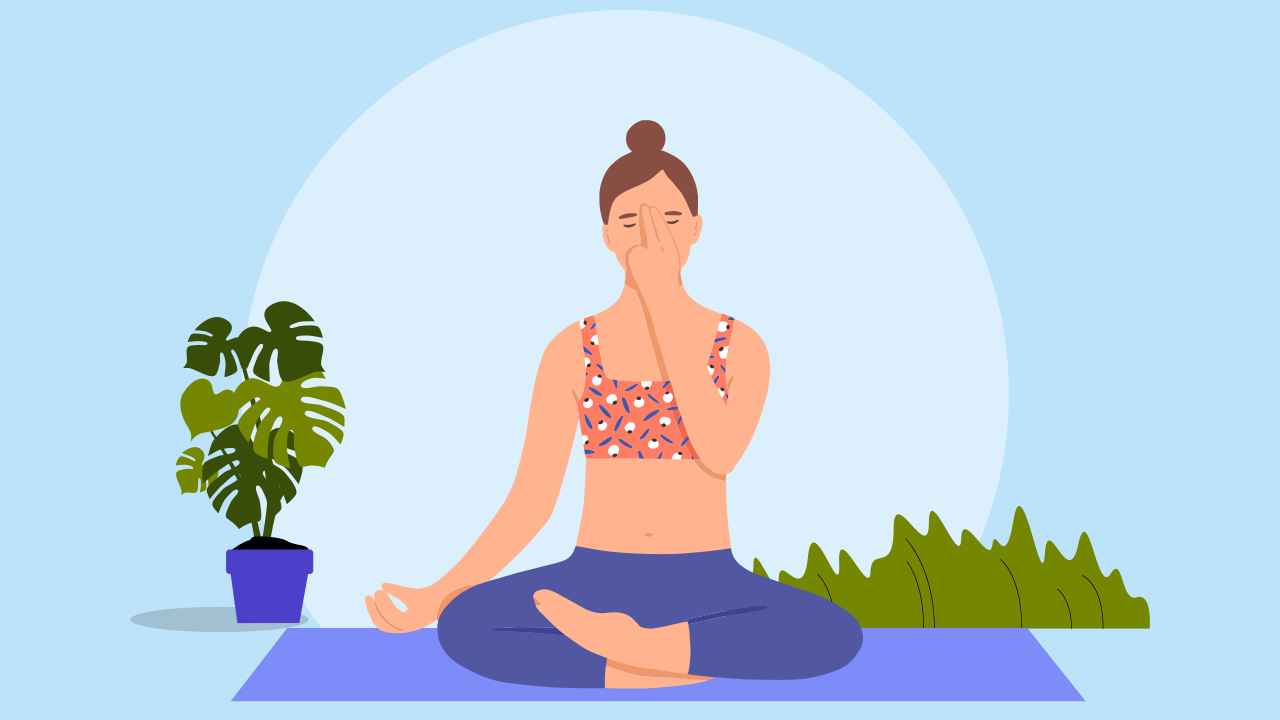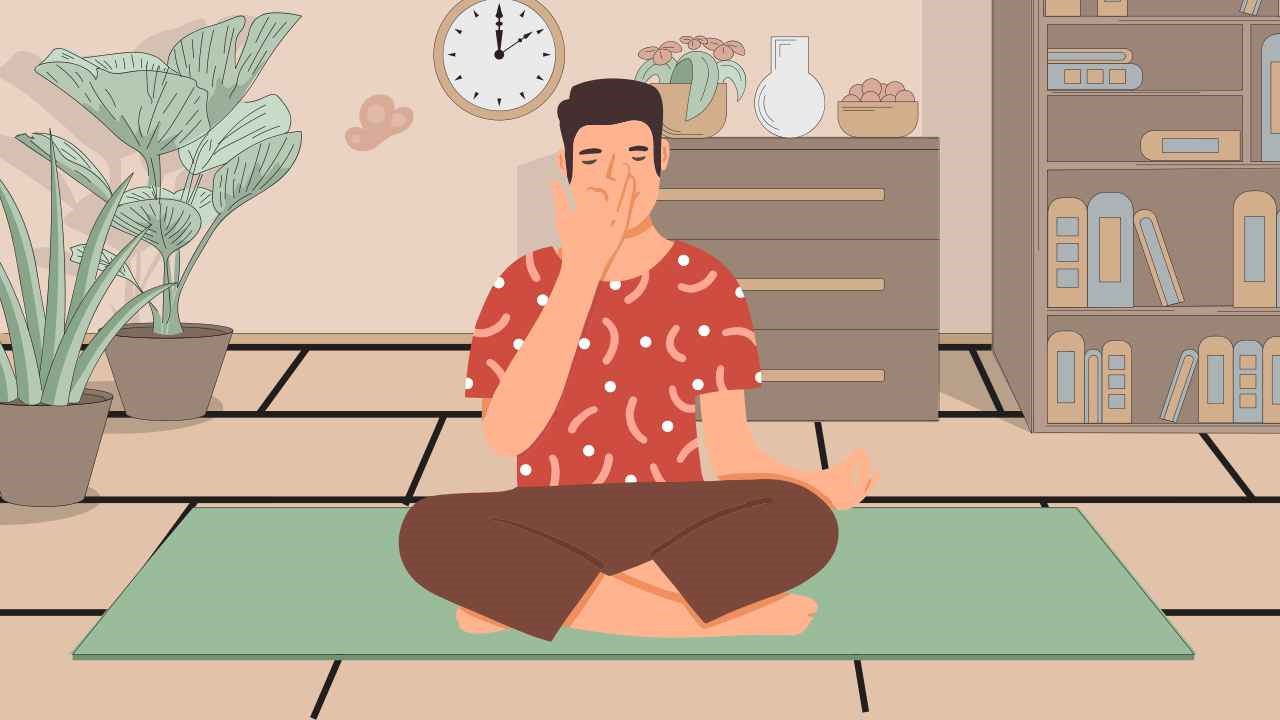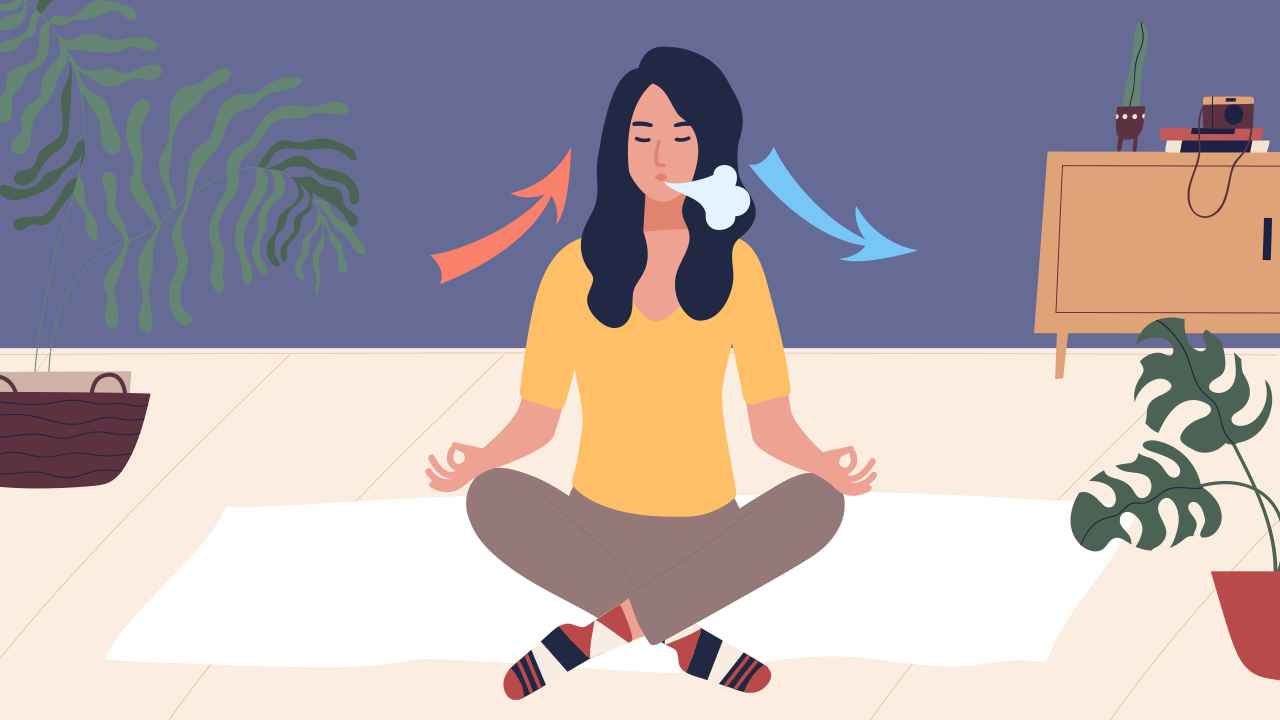
Yoga: Types of Breathing Techniques

Control and awareness of the breath are fundamental pillars on which the discipline of yoga rests. As yogis, it is important to practice the art of conscious breathing, which has a profound biological impact on our emotional, mental, and physical state.
Also read: Breath Awareness in Yoga: Dos and Don’ts
Let’s explore the different types of breathing techniques.
Types of breathing techniques
Equal breathing
As the name suggests, we try to maintain an equalizing breath throughout the practice. Doing so not only helps us stay focused and aware during our practice, but it has a sedative effect on the nervous system. Practicing equal breathing improves concentration and mindfulness during asana practice.
How to perform equal breathing?
Begin inhaling and exhaling maintaining equal counts for both. For example, inhalation for 3 counts and exhalation for 3, similarly use a ratio of 2:2 or 4:4 depending on your capacity. Inhaling in a continued manner without retention or suspension of breath completes one round.
Repetition: Practice for around four to five rounds in an uninterrupted manner.
Awareness: Concentrate on the continuous flow of breath while maintaining the ratio.
Clavicular breathing
The upper most part of our lungs are not adequately ventilated. It is found that while performing rigorous physical activity or breathing hard when tired or anxious, these muscles get strained. Practicing clavicular breathing strengthens the clavicle muscles of the upper lobes as well as oxygenates the areas of lungs under the clavicle.
How to perform clavicular breathing?
Place your hands on your shoulders with your fingers slightly grazing the collarbone and the thumb at the back. The elbows will remain stretched out and the chest will open up. Inhale completely using your clavicular muscles, allow your shoulders to rise up and a little back. As you exhale, let your shoulders relax and repeat the round again.
Breathing: Inhale for 5x counts, exhale for 5x counts. The ratio will remain 1: 1; you may increase or decrease the number of counts as per your capacity. There is no suspension or retention of the breath.
Repetition: Practice for around four to five rounds. You may choose to take a break after each round or perform in a continuous flow.
Awareness: Focus your attention on the sensation felt on the collarbone.
Limitations: Fractured collarbone, or any collarbone area surgery. In case of frozen shoulders, perform it with hands placed in front and the elbows on the sides of the abdomen. In case of vertigo, this can be done while sitting.
Also read: Vertigo: It Is More Than Just Dizziness
Intercostal breathing
Intercostal muscles surrounding the lungs are internal muscles that play an important role during respiration. Conditioning these muscles becomes imperative in order to train the lungs and chest cavity, thus enabling them to breathe perfectly. This exercise is also said to improve the vital capacity of the lungs and facilitate better oxygenation throughout the body.
How to perform intercostal breathing?
Place your hands on the rib cage, with fingers at the front facing each other and thumbs at the back. Start inhaling to your maximum capacity and examine whether the chest expands laterally. Notice that during exhalation, the chest contracts and relaxes. Be mindful so as to only use the intercostal muscles and not the clavicular and diaphragmatic muscles.
Breathing: Inhale for 5x counts, exhale for 5x counts. The ratio will remain 1: 1; you may increase or decrease the number of counts as per your capacity. There is no suspension or retention of the breath.
Repetition: Practice this for about four to five rounds in a slow and controlled manner.
Awareness: Bring attention towards the sensation of expansion of the chest, sideways.
Limitations: As we are working on internal muscles of the ribs, those with fractured ribs should avoid it. In case of vertigo, this can be done while sitting.
Diaphragmatic breathing
With age and high levels of stress, we constantly engage into the practice of shallow breathing. Diaphragmatic breathing, also called abdominal breathing, is the practice of taking deep and fuller breaths. It is said to encourage maximum exchange of oxygen, which slows down heart beat and stabilizes blood pressure. This is because the diaphragm contracts and moves downwards towards the abdominal cavity during inhalation, allowing the chest and lungs to expand. It is also said to improve digestive capacity, provide relief during menstrual pain, and cure insomnia. The technique is found to be most effective when performed before bedtime or any time during the day in stressful situations.
How to perform diaphragmatic breathing?
Lie down on your back with your knees bent and feet placed on the ground. Place either the right or left hand on your abdomen. Begin inhaling gradually and fully, so that your belly swells. As you start exhaling, let your abdomen fall down bringing it closer to the spine.
Breathing: Inhale for 6x counts, exhale for 6x counts. The ratio will remain 1: 1; you may increase or decrease the number of counts as per your capacity. There is no suspension or retention of the breath.
Repetitions: Practise for about five to 10 rounds in a continuous manner.
Awareness: Let your awareness travel to the belly with every inhalation and exhalation. Experience the rise and fall of your abdomen.
Limitations: As we perform this lying on our back, exaggerating the curve of our spine with the inflation and deflation of our belly, any one with kyphosis, recent abdominal surgery, hernia, or inflammation should avoid it.
Practicing these four breathing exercises will bring a sense of inner harmony and calm, which will in turn help you remain healthy and stress-free.
References
1. Intercostal, Clavicular, Diaphragm Muscle Breathing Exercise. Shahzadpur Farm Yoga. https://www.shahzadpurfarmyoga.com/basic-breathing-exercises (accessed Oct 6, 2020).
2. Learning diaphragmatic breathing. Harvard Health Publishing. 2016; published online Mar 10. https://www.health.harvard.edu/lung-health-and-disease/learning-diaphragmatic-breathing (accessed Oct 6, 2020).
3. Clavicular Breathing, Pranayama, Yoga. Yoga India Foundation. 2019; published online Jul 1. https://yogaindiafoundation.com/what-is-clavicular-breathing-in-pranayama/ (accessed Oct 6, 2020).














